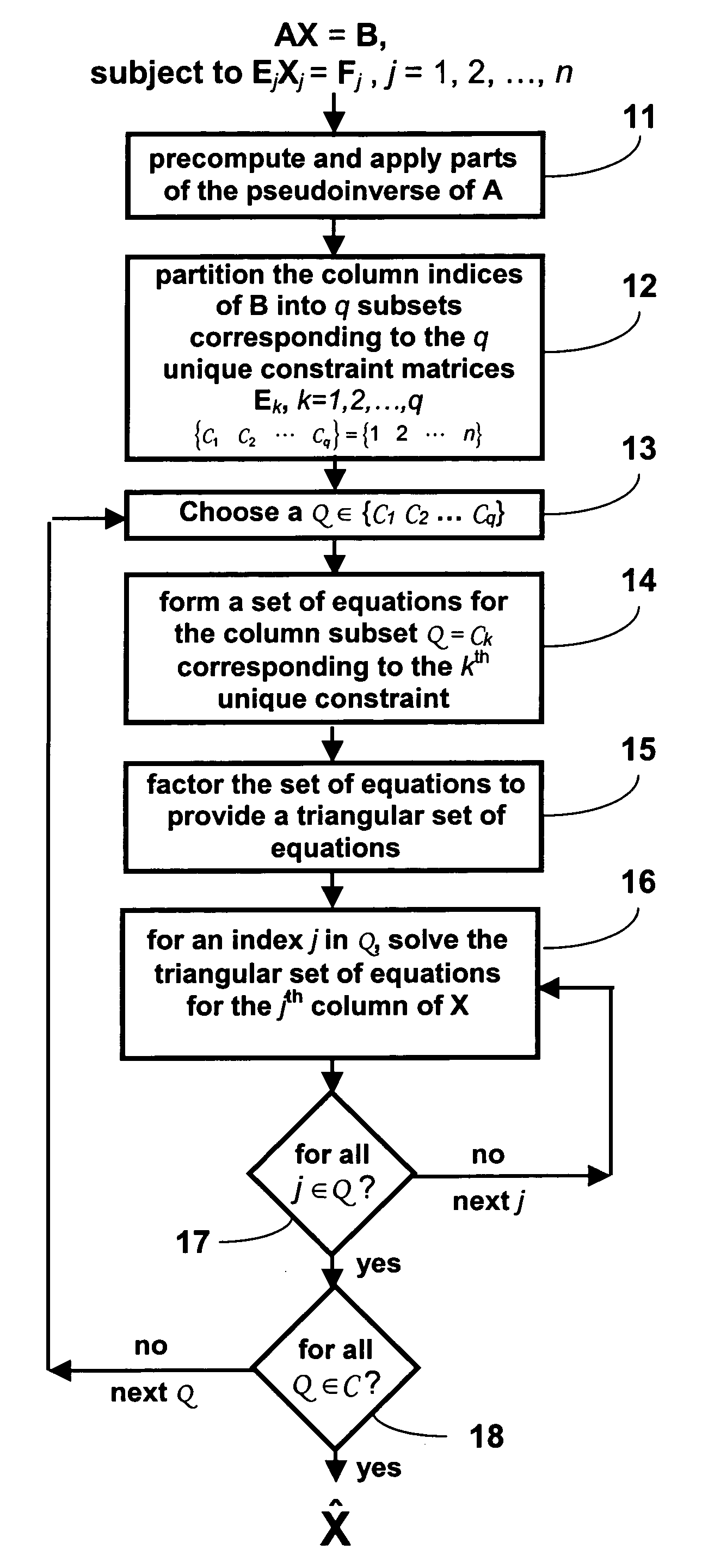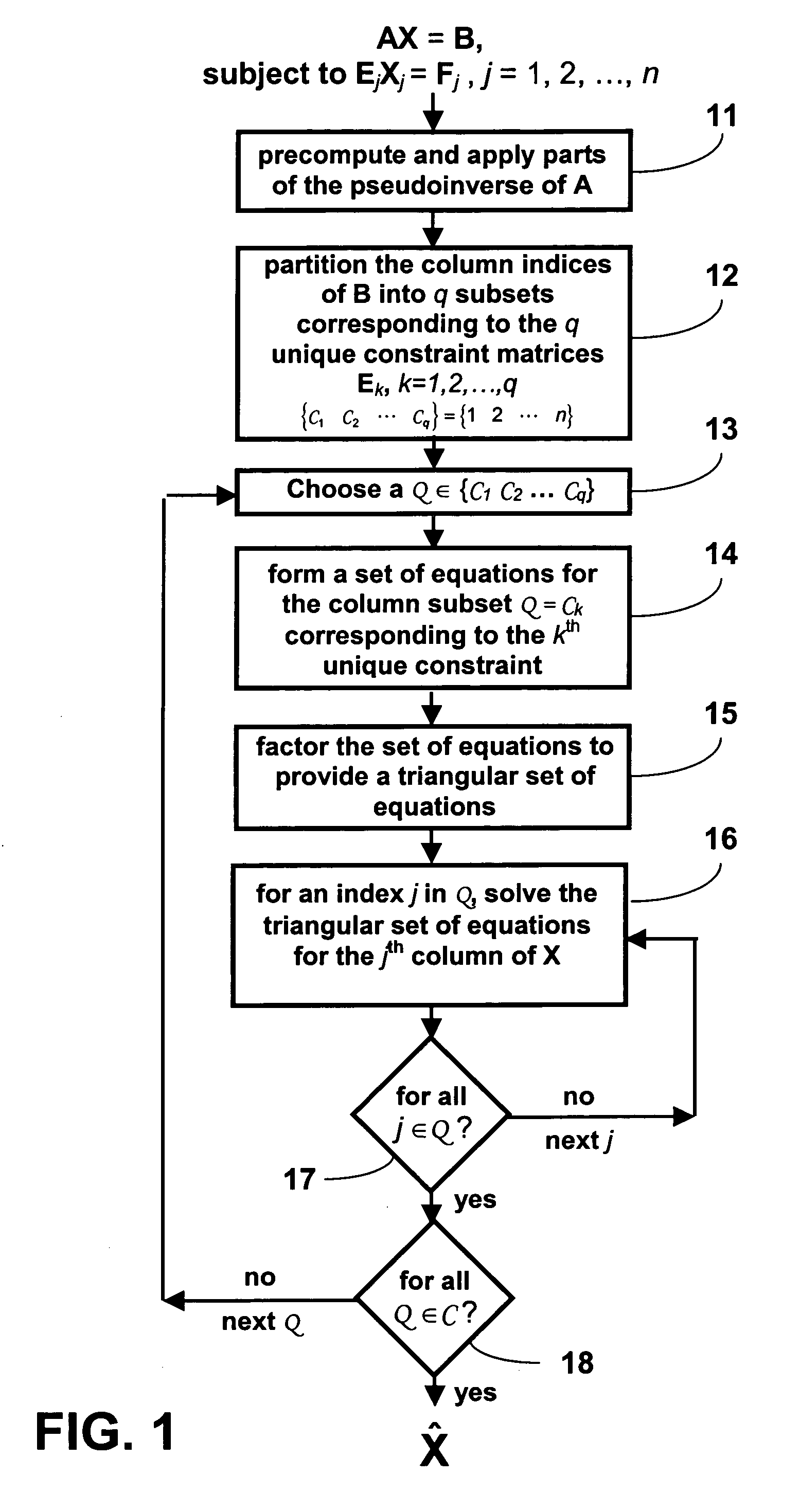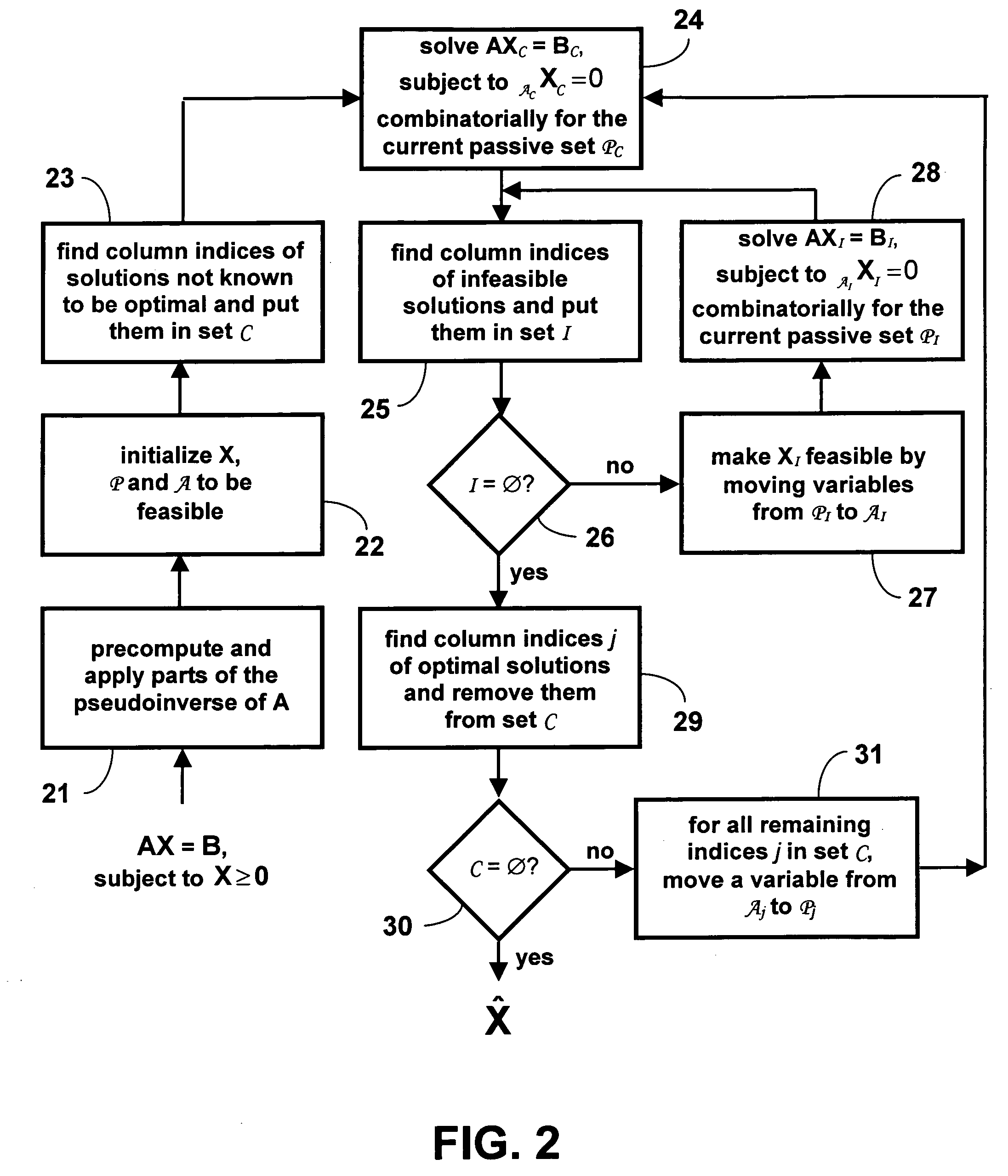Fast combinatorial algorithm for the solution of linearly constrained least squares problems
- Summary
- Abstract
- Description
- Claims
- Application Information
AI Technical Summary
Benefits of technology
Problems solved by technology
Method used
Image
Examples
Embodiment Construction
[0017]Notation herein is typical of this type of work: scalars are lowercase italics, column vectors are lowercase bold, matrices are uppercase bold, and transposes of vectors (i.e., row vectors) and matrices are indicated by a superscript T. Columns of matrices are depicted using lowercase bold with a dot-index subscript, e.g., column one of matrix A is the column vector a·1. Rows of matrices are depicted using lowercase bold with an index-dot subscript, e.g., row one of matrix A is the row vector a1· (note that it is not shown as a transpose). Prepended superscripts represent the ordinal in a series of iterations. Sets of indices are represented with fancy type, e.g., and sets containing sets of indices by the bolded fancy type, e.g., . Finally, submatrices are represented as pre- and / or post-subscripted bolded capital letters. Thus, XC is the submatrix of X comprising the rows whose indices are in the sets and columns whose indices are in the set C.
General Linearly Constrained ...
PUM
 Login to View More
Login to View More Abstract
Description
Claims
Application Information
 Login to View More
Login to View More - R&D
- Intellectual Property
- Life Sciences
- Materials
- Tech Scout
- Unparalleled Data Quality
- Higher Quality Content
- 60% Fewer Hallucinations
Browse by: Latest US Patents, China's latest patents, Technical Efficacy Thesaurus, Application Domain, Technology Topic, Popular Technical Reports.
© 2025 PatSnap. All rights reserved.Legal|Privacy policy|Modern Slavery Act Transparency Statement|Sitemap|About US| Contact US: help@patsnap.com



